Believe it or not ... there are "Farmer Mites". I invite you to meet them.
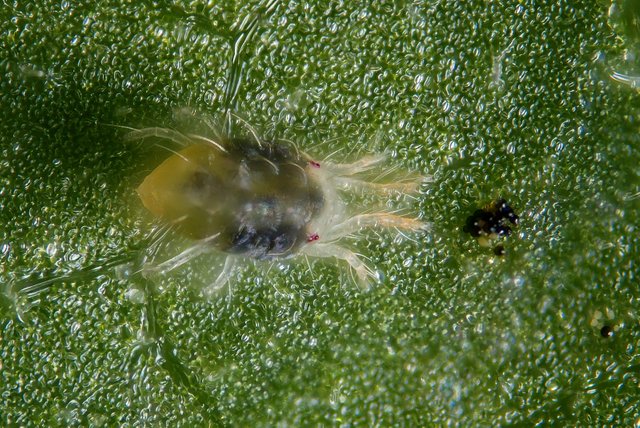
Well yes ... mites are not just bedmates, or chase your pets. In this article we will know more about these animals that love agriculture.
Mites are small animals related to spiders, scorpions and ticks but of microscopic size, which cause very intense damage in agriculture; the dry climate favors them, which is why its highest incidence is observed in the dry season and inside the greenhouses its damage tends to be very intense if corrective measures are not taken in time.
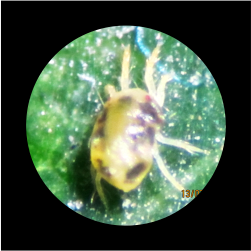
They are only visible with powerful magnifying glasses of 30 X or 50 X. and they differ from the insects by having 4 pairs of legs instead of three pairs of legs that the insects have. If the magnifying glass is not very powerful you will see white or red spots that move under the leaves.
Mites affect the plants by consuming the tender tissue of flowers, fruits and buds, generally producing a scraping that atrophies the subsequent growth of the tissues and manifests as deformations in buds, flowers and fruits; when the damage is very intense the plant stops growing and production stops, the fruits affected by the mites usually have cosmetic damage that detracts from their commercial value.
Another manifestation of high populations of mites can be seen in some species of cobwebs in the lower part of the leaves and as the population of mites increases the amount of cobwebs can cover the entire plant.
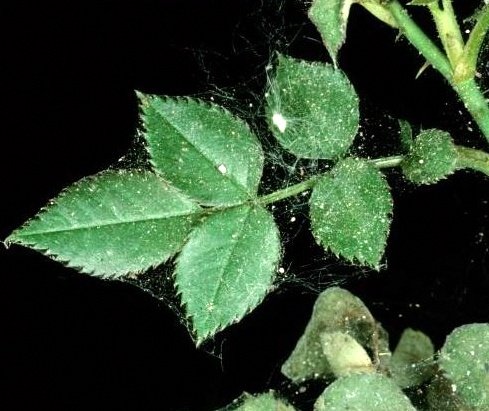
Another characteristic to highlight is the high multiplication rate of mites, in a few days they can increase their population significantly, this creates as a consequence that when ecological imbalances occur due to the use of agrochemicals, overpopulations of mites occur, producing a very violent damage and As a consequence, control with acaricides of fumigant action is bad strategy, preferring those with systemic action.
In tomato, paprika and potato, as in melon, watermelon and cucumber, the mites produce deformed buds, which affect the shape of the fruit that loses commercial value, the presence of small cobwebs in the lower part of the leaf is evident.
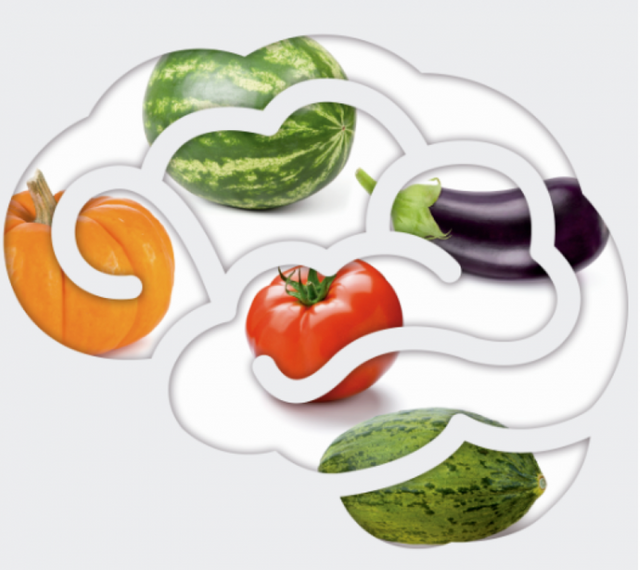
In the eggplant, the damage does not produce misshapen buds, the leaves lose their characteristic green color and turn an ocher color as if they were toasted in the lower part, in the upper part they look pale, the growth and the production stops, In severe damages, cobwebs are observed on the margins of the leaves.
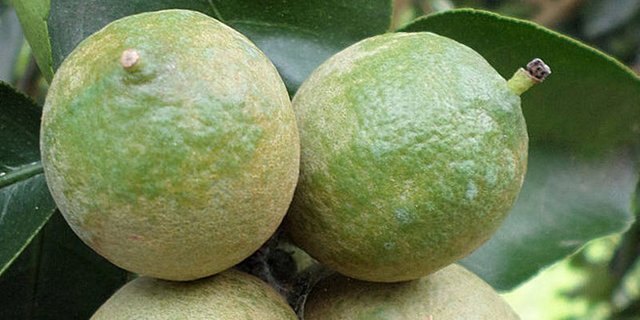
In the parchita the mites are located in the old leaves and produce defoliation, also affects the small fruits that tend to deform. The toasting mite in lemons produces very hard fruits without juice and without commercial value, showing gray color very different from its green color.
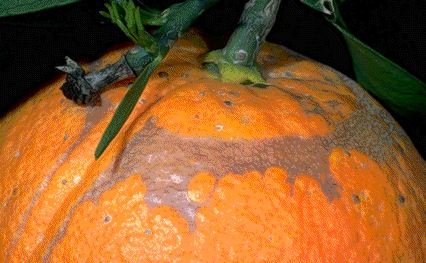
In the case of orange produces a tan on the surface of the fruit that takes away value as table fruit sold in a supermarket, but if your destination is to obtain juice, it is widely recognized that they are the tastiest, juiciest fruits and sweets that can be produced, so that this character of tanning becomes a competitive advantage that increases the value to the consumer, however this increase in value is not reflected in a better price for the farmer.
The coconut tree is also affected in a cosmetic way by the mites, damaging the appearance of the fruit, which is important only if the fruit is destined to serve as a bar at tourist sites, however it is not important if the coconut water is to be extracted to be sold by supermarkets.
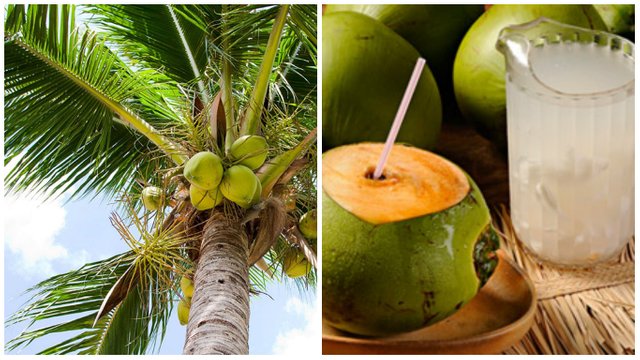
In the milky or papaya we have observed important attacks that began with a tan in the leaves that accompanied then a strong defoliation.

Mites can be controlled in various ways, sprinkler irrigation in the open field, just as nebulizers inside greenhouses affect populations, high relative humidity also reduces the incidence of mites. When it is watered by furrows or by drip, the control of mites is difficult and it is necessary to resort to chemical or biological methods.
Sulfur is the number one enemy of mites, it does not kill animals, but it irritates them in such a way that they move to places where they do not cause harm. By not causing the death of the mite there is no pressure to produce genetic resistance of the pest to chemical control, on the other hand sulfur is considered a natural product widely accepted by the techniques of ecological control of pests and organic agriculture.
Sulfur has the disadvantage that it is toxic to plants of the Cucurbitaceae family, so its use in melon, watermelon, cucumber, squash, chayota and zucchini is not recommended.
Another technique accepted by organic and ecological agriculture is the use of predatory mites, these mites do not consume plants but feed on other mites, in such a way that they progressively lower the population of the pest to levels acceptable to the producer, it is understood that applications of fumigant insecticides kill these predatory mites and as the bad mites reproduce rapidly then the population of mite pests increases significantly and the use of a fumigant product is worse than not applying anything.
Agrochemicals are the last alternative for the control of mites, but it must be understood that this is not accepted in organic farming and there is pressure for the development of genetic resistance of mites to pesticides, as the development of Insecticide resistance is achieved more quickly.
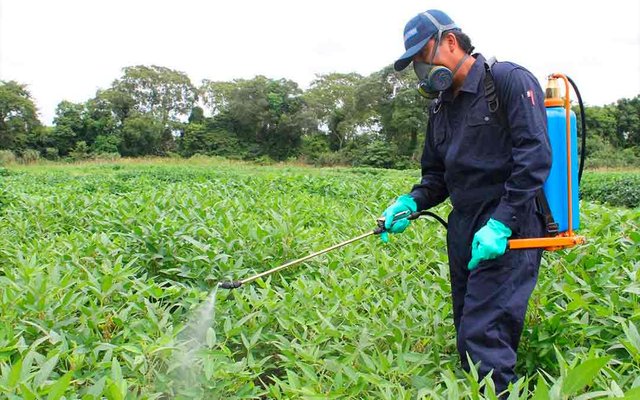
Source consulted:
http://www.agro-tecnologia-tropical.com/acaros.html>
Congratulations @isandreyes! You have completed the following achievement on Steemit and have been rewarded with new badge(s) :
Click on the badge to view your Board of Honor.
If you no longer want to receive notifications, reply to this comment with the word
STOPDo not miss the last post from @steemitboard:
SteemitBoard World Cup Contest - The semi-finals are coming. Be ready!
Participate in the SteemitBoard World Cup Contest!
Collect World Cup badges and win free SBD
Support the Gold Sponsors of the contest: @good-karma and @lukestokes
Esos bichitos son terribles!! je je